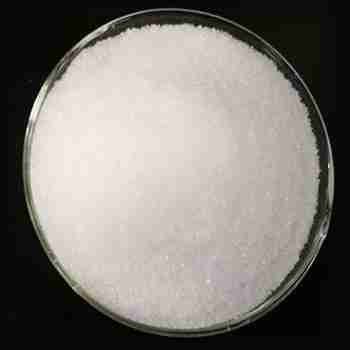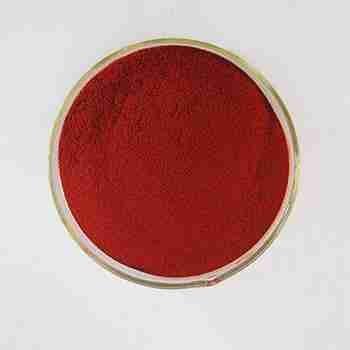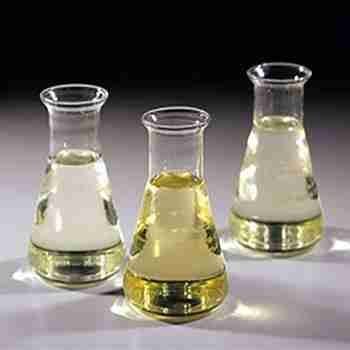Adenosine CAS 58-61-7
Assay: 99%-101%
Appearance: White powder
Package: 25kg/drum
Capability: 200MT/year
Sample: Available
related documents:
COA of Adenosine 58-61-7
Request for product documents
发送询盘
Description
Adenosine Quick?Details
Chemical Name: Adenosine
CAS No.: 58-61-7
Molecular Formula: C10H13N5O4
Molecular Weight??267.24
Appearance: White powder
Adenosine Typical Properties
Item
Standard
Assay
99%-101%
Identification
IR spectrum should match that of the working standard
Melting point
223-238 ??
???????? Specific rotation
-68??-72??
Loss on drying
?Q0.5%
Residue on ignition
?Q0.1%
Heavy metals
?Q10ppm
Acidity or alkalinity
??????? Meet the requirements
Limit of Ammonia
??Q0.0004
Limit of chloride
??Q0.007%
Limit of sulfate
??Q0.02%
Total of impurities ?Q0.5%
Guanosine ?Q0.1%
Inosine ?Q0.1%
Uridine?Q0.1%
Adenine ?Q0.2%
?
Adenosine Usage
1. Antiarrhythmic drugs can make paroxysmal supraventricular tachycardia into sinus rhythm. Used for supraventricular arrhythmias associated with atrioventricular.
2. Antiviral drug.
3. The pharmaceutical industry is mainly used for the production of adenosine arabine and adenosine triphosphate; Coenzyme and its series products are the main raw materials of drugs such as cyclic adenosine phosphate.
4. For the production of ATP, adenosine arabine, coenzyme A.
5. Treatment of angina pectoris, myocardial infarction, coronary insufficiency, arteriosclerosis, essential hypertension, cerebrovascular disorders, sequelae of stroke, progressive muscular atrophy, etc
6. Endogenous neurotransmitters.
7. Adenosine-induced apoptosis of hL-60 cells in human leukemia. It also has anti-arrhythmia properties. A neurotransmitter, adenosine A receptor in all subtypes, ACTS is the preferred endogenous agonist.
Adenosine Packaging and Shipping
Packing: 25kg/drum
Adenosine Storage
Ventilated low-temperature drying warehouse; Store separately from food ingredients.
| 5 |
|
0 |
| 4 |
|
0 |
| 3 |
|
0 |
| 2 |
|
0 |
| 1 |
|
0 |
- 2
- 2-diallylpent-4-en-1-amine
- 4
- 95-16-9
- Ammonium sulfamate
- Benzothiazole
- cas:67889-00-3ح2
- cas:83524-75-8 | pigment black 32
- cas:928836-00-4 | 2
- cas:932745-70-5 | 4
- Chemical Minerals
- Coconut diethanolamide
- Daily Chemicals
- discount
- for sale
- General pvc resin
- hexyl D-glucoside
- in stock
- Lauramidopropyl betaine
- LAURIC ACID MONOETHANOLAMIDE
- Petroleum Additives
- Plasticiser
- Ploymers
- price
- PVC
- quotation
- Raw Materal
- Remove term: Petroleum Additives Petroleum Additive
- SODIUM ETHYL 2-SULFOLAURATE
Related Products
Chemical Name: UV-120
Other Name: (2’,4’-Di-tert-butylphenyl 3,5-di-tert-butyl-4-hydroxybenzoate)
CAS No.: 4221-80-1
Molecular Fomula: C29H42O3
Molecular weight: 438.66
Assay: ≥99%(LC)
Chemical Name: 3-Hydroxybutyric acid
CAS No.: 625-71-8
Molecular Formula: C4H8O3
Molecular Weight: 104.1
Appearance: White powder
Carnosine was discovered together with carnitine by the Russian chemist Gurevitch. Studies in the UK, South Korea, Russia and other countries have shown that carnosine has strong antioxidant capacity and is beneficial to the human body. Carnosine has been shown to scavenge reactive oxygen species (ROS) and ??-?? unsaturated aldehydes formed during oxidative stress by excessive oxidation of fatty acids in cell membranes.
L-Carnosine is a small molecule with a left-handed structure of a natural dipeptide that is ubiquitous in nature. It is a dipeptide composed of ??-alanine and L-histidine. Carnosine has cellular antioxidant, anti-aging and various physiological health functions and medical effects. It has therapeutic effects on hypertension, heart disease, senile cataracts, ulcer healing, etc. It also has anti-tumor, immune model tests, and anti-stress effects. stimulating factors and other effects.
Chemical Name: Ashwagandha Extract
Synonyms: Withania somnifera, ext.; Withania Somnefera Extract
CAS: 90147-43-6
Appearance: Brown
Coenzyme A sodium salt hydrate (CAS 55672-92-9) is an important biologically active substance.
Appearance: Usually white or off-white powder. Solubility: Easily soluble in water, forming a clear solution in water.
Function: In the body, coenzyme A sodium salt hydrate is an important coenzyme that participates in a variety of biochemical reactions. It plays a key role in the metabolism of fatty acids, promoting the activation and oxidative decomposition of fatty acids. It participates in the tricarboxylic acid cycle and provides energy for cells. It is also important for the metabolism of certain amino acids.
Application: Commonly used in biochemistry and molecular biology research as a cofactor for enzyme reactions.
In the field of medicine, it may be used in the treatment or adjuvant treatment of certain diseases.
Hydroxyproline is a non-essential amino acid divided from another amino acid called proline. It is created by the communication of proline with ascorbic acid vitamin C. This process produces a hydroxyl team bound to a hydrogen-oxygen particle, which is affixed to a carbon particle of proline as well as converted to hydroxyproline.Trans-4-hydroxy-l-proline is an optically energetic form of 4-hydroxyproline with l-trans setup. It can be used as human metabolite, plant metabolite and also computer mouse metabolite. It is an tautomer of trans-4-hydroxy-l-proline zwitterions.
Chemical Name: o-Xylene
Synonyms: 1,2-Dimethylbenzene; ortho-xylene
CAS No.: 95-47-6
Molecular Formula: C8H10
Molecular Weight: 106.17
Chemical Name: N-Acetyl-D-mannosamine
Cas: 7772-94-3
MF: C8H15NO6
MW: 221.21
Appearance: White to off-white powder
Common English name: 5-iodo-2,3-dihydropyridazin-3-one
CAS No.: 825633-94-1
Molecular formula: C4H3IN2O
Molecular weight: 221.98
Sample: Available
Chemical Name: Dehydrocholic acid
Synonyms: Acide dehydrocholique; Triketocholanic acid
CAS No.: 81-23-2
Molecular Formula: C24H34O5
Molecular Weight: 402.53
Appearance: Powder
Polyglutamic acid (y-PGA), also known as natto gum, is a high molecular peptide polymer synthesized from several glutamic acid monomers through microbial fermentation. It is rich in glutamic acid, glucose, protein and minerals. , vitamins and other biologically active substances.
Polyglutamic acid (??-PGA) is a sticky substance that was first discovered in ??Natto??. It is currently widely used in agricultural production and is called a new biostimulant. It is fully water-soluble, biodegradable, edible, and non-toxic. It is a biopolymer produced by microbial fermentation.
Chemical Name: Arabic gum
CAS No.: 9000-01-5
Appearance: powder




















Reviews
There are no reviews yet.